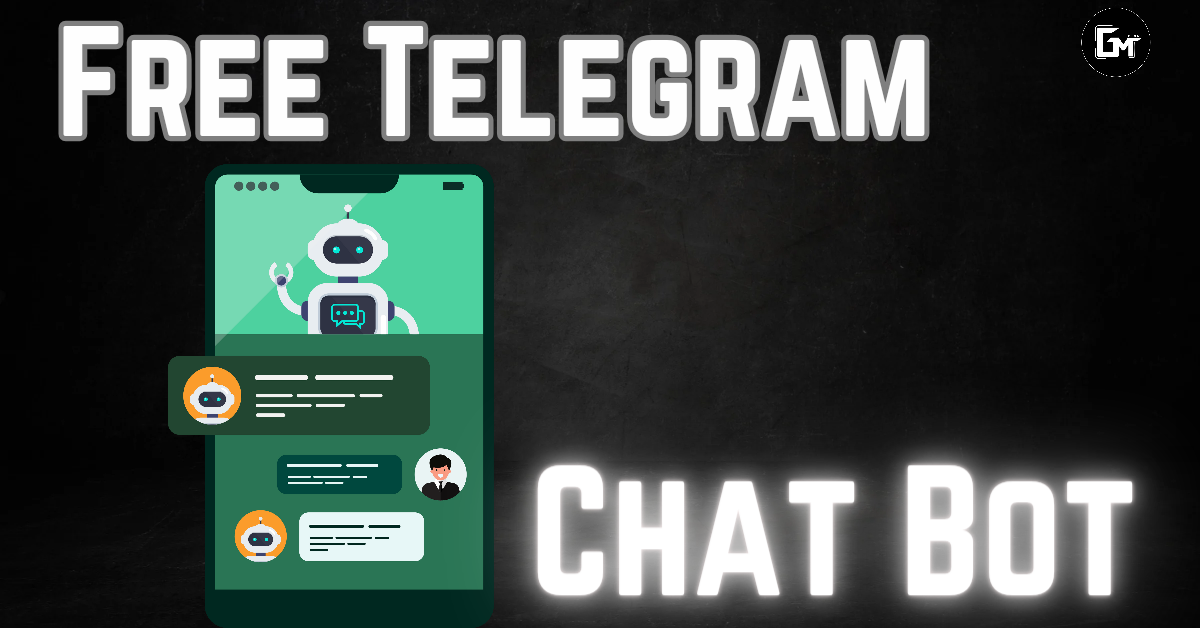Introduction:
In this era of fast-paced information sharing, the need for streamlined content delivery is more crucial than ever. The digital landscape is teeming with information, and being able to effectively filter and shorten URLs can significantly enhance user experience. It’s not just about simplifying web addresses; it’s about creating a seamless browsing experience and maximizing the reach of your content. In this comprehensive guide, we’ll explore the process of creating an auto-filter bot with a URL shortener, a powerful tool that combines the best of both worlds. By the end of this article, you’ll be equipped with the knowledge to create your very own auto-filter bot, transforming lengthy URLs into elegant, shareable links.
IMPORTANT LINKS :-
○ Repo Link – https://github.com/Greymattersbot/url-auto-delete-shortener-bot
○ You Can Watch Old Method too for more help & clarification – https://youtu.be/dRXAH7RWSK0
○ How to create account on Github – https://youtu.be/NLnBZ6_k0GA
○ How to get your Telegram API ID & HASH – https://youtu.be/NEbqY5yb9Yo
○ How to get your Telegram UserID – https://youtube.com/shorts/aaOgSzTNl_g?feature=share
○ How to create Telegram Bot & get Bot Token – https://youtu.be/nVBcuT_2jlo
○ How to get Telegram Channel/Group ID – https://youtube.com/shorts/7US6Y-qg0Bw?feature=share
○ How to get MongoDB URL – https://youtu.be/kmZVmTwutfs
Chapter 1: Understanding the Need for an Auto-Filter Bot
The internet is a vast labyrinth of information. Every day, millions of URLs are shared, but their sheer length can be daunting for both content creators and consumers. This is where an auto-filter bot with a URL shortener comes into play. It acts as an intermediary, simplifying lengthy URLs into neat, compact links that are easier to manage and share. The benefits are twofold: it enhances user experience by reducing clutter, and it provides content creators with invaluable insights into link performance.
Chapter 2: The Basics of URL Shortening
URL shortening is the foundation upon which your auto-filter bot will operate. In its simplest form, a URL shortener is a service that converts a long, unwieldy URL into a much shorter format. But how does it work? It’s essentially a redirection technique. When a user clicks on the shortened link, they are redirected to the original, longer URL. The process is nearly instantaneous, and it saves valuable characters in social media posts and allows for better branding.
Chapter 3: Building Your Auto-Filter Bot
3.1. Selecting a Programming Language
The first step in creating an auto-filter bot is choosing a programming language. Popular choices include Python, JavaScript, and Ruby. Your choice should align with your familiarity and the specific requirements of your project.
3.2. Creating a Bot Framework
Next, you’ll need to set up a bot framework. This framework will be responsible for receiving and processing URLs, then interacting with the URL shortening service to generate short links.
3.3. Integrating the URL Shortener
Choose a URL shortening service API to integrate into your bot. Services like GreyMatterslinks.in & other websites offer APIs that allow you to programmatically shorten URLs.
3.4. Implementing the Auto-Filter Logic
The auto-filter logic is the heart of your bot. This logic should allow you to filter incoming URLs based on specified criteria. For example, you could filter out URLs that contain specific keywords or are from certain domains.
Chapter 4: Enhancing User Experience
4.1. Custom Shortened URLs
Consider offering users the option to customize their shortened URLs. This not only adds a personal touch but also increases the likelihood of users sharing them.
4.2. Analytics and Tracking
To understand the performance of your shortened URLs, integrate tracking and analytics. You can monitor how many times a link is clicked, when it’s clicked, and where the clicks are coming from.
Chapter 5: Practical Applications and Use Cases
An auto-filter bot with a URL shortener has a wide range of applications. It can be employed for social media marketing, affiliate marketing, branding, and more. Explore the various scenarios where this technology can be a game-changer.
Chapter 6: Potential Challenges and Solutions
As with any project, you may encounter challenges along the way. Common issues include managing high traffic, ensuring link reliability, and security concerns. This section addresses these challenges and offers solutions.
Chapter 7: Advanced Features and Customization
To take your auto-filter bot with a URL shortener to the next level, consider implementing advanced features and customization options. These can set your bot apart from the competition.
7.1. Dynamic Link Generation
One of the advanced features you can add is dynamic link generation. Instead of manually inputting URLs, your bot can automatically pull links from specified sources, such as your website’s RSS feed or an online database, making the process entirely hands-free.
7.2. Geotargeting
Customization is key to effective marketing. Implement geotargeting, where you can create unique shortened links for users based on their geographical location. This ensures that your audience receives content tailored to their region, leading to higher engagement rates.
7.3. Scheduled Link Sharing
Enable users to schedule when their shortened links are shared on social media or other platforms. This feature can be a game-changer for content creators, as it allows them to maintain a consistent online presence even when they’re not online.
Chapter 8: The SEO Implications
URL shortening can have implications for search engine optimization (SEO). It’s essential to understand how these changes might affect your website’s visibility and ranking on search engines.
When shortening URLs, it’s important to consider 301 redirects, which signal to search engines that the shortened URL should be associated with the original URL. This helps maintain the link’s authority and ranking. Additionally, if your bot is used for marketing or advertising campaigns, ensuring that your shortened URLs contain relevant keywords can positively impact SEO.
Chapter 9: Security and Privacy Concerns
Security is paramount when dealing with URLs and online content. Addressing security and privacy concerns in your auto-filter bot is essential. Discuss the following aspects:
9.1. Secure Transmission
Ensure that data, especially user-generated content and links, are transmitted securely. Implement encryption protocols to safeguard sensitive information.
9.2. Protection Against Malicious Links
Your auto-filter bot should include a mechanism to scan and verify links for potential threats. Protect your users from malicious or phishing links that could harm their devices or compromise their privacy.
9.3. Data Privacy
Respect user privacy by clearly communicating your data usage policy and obtaining consent for collecting any personal information. Adhering to data protection regulations is critical to maintaining user trust.
Chapter 10: User Feedback and Continuous Improvement
Encourage users to provide feedback on your auto-filter bot’s performance. Their insights can be invaluable for making improvements and addressing any issues. Regular updates and bug fixes show your commitment to enhancing the user experience.
Chapter 11: Case Studies and Success Stories
Illustrate the real-world impact of an auto-filter bot with URL shortener by sharing case studies and success stories. Highlight how businesses, organizations, or individuals have benefited from implementing this technology, whether it’s increased engagement, improved branding, or efficient content delivery.
Chapter 12: Future Trends and Innovations
As technology advances, the world of URL shortening and content filtration continues to evolve. Explore potential future trends, such as AI-driven link optimization, augmented reality integration, and the role of URL shortening in the Internet of Things (IoT).
Chapter 13: Monetization Opportunities
Your auto-filter bot with a URL shortener can offer unique opportunities for monetization. Here are a few strategies you can explore:
13.1. Sponsored Links
Consider offering sponsored link shortening. Businesses or advertisers can pay for their links to be prominently displayed, creating a revenue stream for your bot.
13.2. Subscription Models
Implement premium features that users can access through a subscription model. This not only generates revenue but also provides added value for your users.
13.3. Affiliate Marketing
Integrate affiliate marketing into your bot. Allow users to create affiliate links through your platform, earning commissions for every successful conversion.
Chapter 14: Legal Considerations
Navigating the legal landscape is vital when developing an auto-filter bot with a URL shortener. Here are some essential legal aspects to keep in mind:
14.1. Copyright and Trademarks
Educate your users about the importance of respecting copyright and trademark laws when creating and sharing content. Implement algorithms that check for copyrighted material to avoid legal disputes.
14.2. Terms of Service
Draft comprehensive terms of service and privacy policies to protect your bot and its users. Make sure you comply with international and regional regulations, such as the GDPR in Europe.
Chapter 15: Resources and Further Reading
To continue your journey and deepen your knowledge, here are some additional resources and further reading recommendations:
- The (Positive) Truth About Link Shortening and SEO
- Data Protection and Privacy Legislation Worldwide
- Technical SEO Techniques and Strategies
- Cybersecurity Best Practices
- Trends in using AI for marketing
Conclusion
In a digital world that values simplicity, efficiency, and user experience, an auto-filter bot with a URL shortener is a powerful tool in the hands of content creators. It streamlines content delivery, enhances brand identity, and provides valuable insights. By following this guide, you’ve embarked on a journey toward a more accessible, effective, and engaging online presence. The future is compact, efficient, and full of possibilities. Are you ready to unlock the potential of your content?
This extensive guide equips you with all the knowledge and insights you need to create a powerful auto-filter bot with a URL shortener. From technical aspects to legal considerations, you’re now prepared to embark on this exciting journey, create a valuable tool, and explore various opportunities in the ever-evolving digital landscape.
Remember to check the video for visual references and additional tips
WATCH NEXT:
- How to use EvaMaria with URL Shortener Bot: https://youtu.be/UfD5OzCS9-o
- How to deploy EvaMaria with URL Shortener Bot on koyeb: https://youtu.be/o1Q9AxKzf_Y
- Complete Guide for EvaMaria | All Errors Fixed: https://youtu.be/ljePoYQ-Q2A
- How to create EvaMaria bot: https://youtu.be/mGQDkZ2PwDU
- Watch this YouTube Series & Learn How to make any Telegram Bot: https://youtube.com/playlist?list=PLOG8wGoPqKltAHm_U2JKHVFzHVgHYt_79
My GEARS 👇
- 💻 Laptop :- https://amzn.to/3oLDTSQ
- 🎤 Microphone :- https://amzn.to/41Bz2lY
- 👓 Eye Protections Glasses :- https://amzn.to/3q0GdX3
- 📶 WiFi Router :- https://amzn.to/3MvAIHw
- 🔌 WiFi Cable :- https://amzn.to/3Mrt295
- 📕 The book that inspired me to start this journey :- https://amzn.to/43dyrHn





